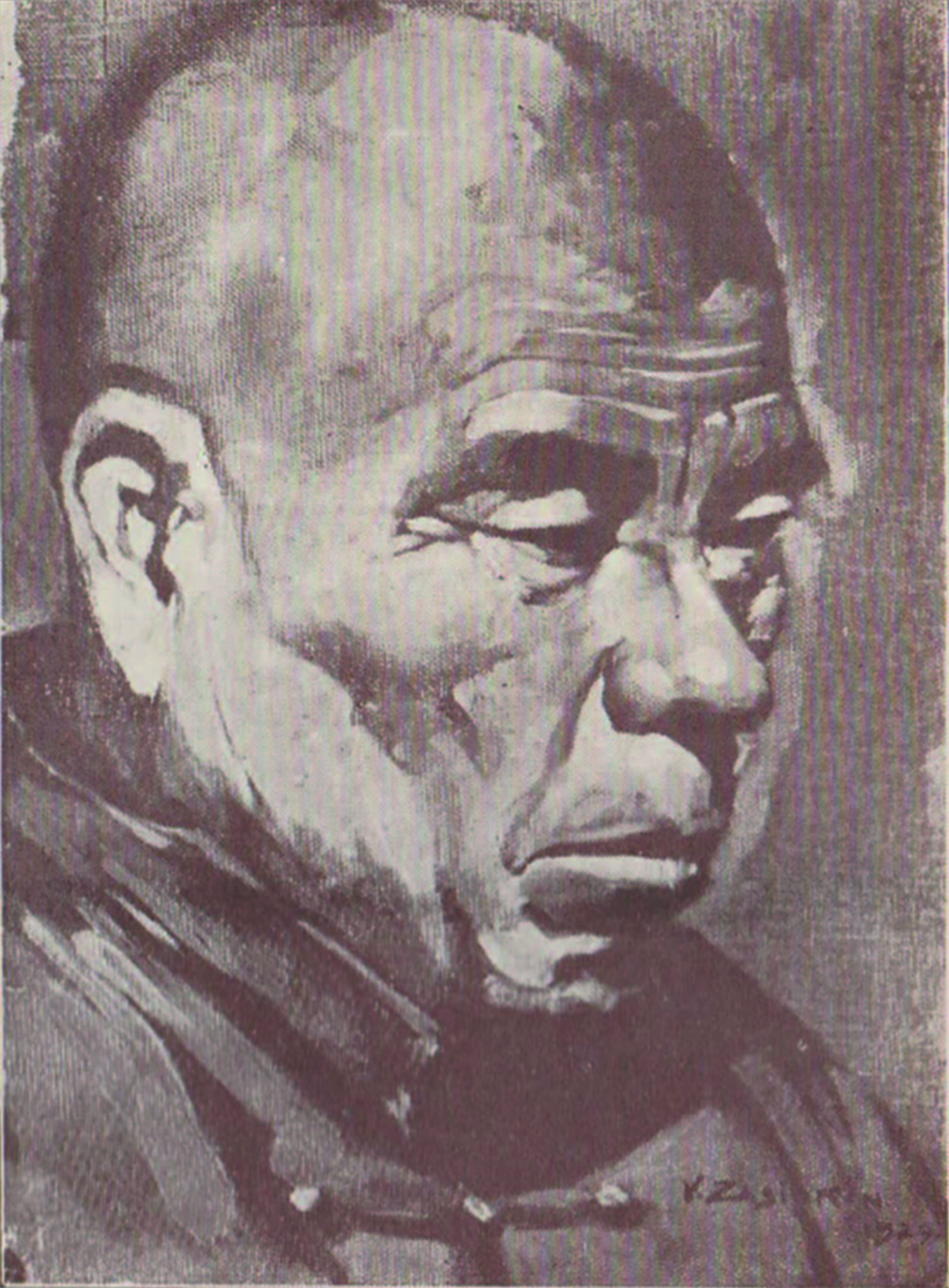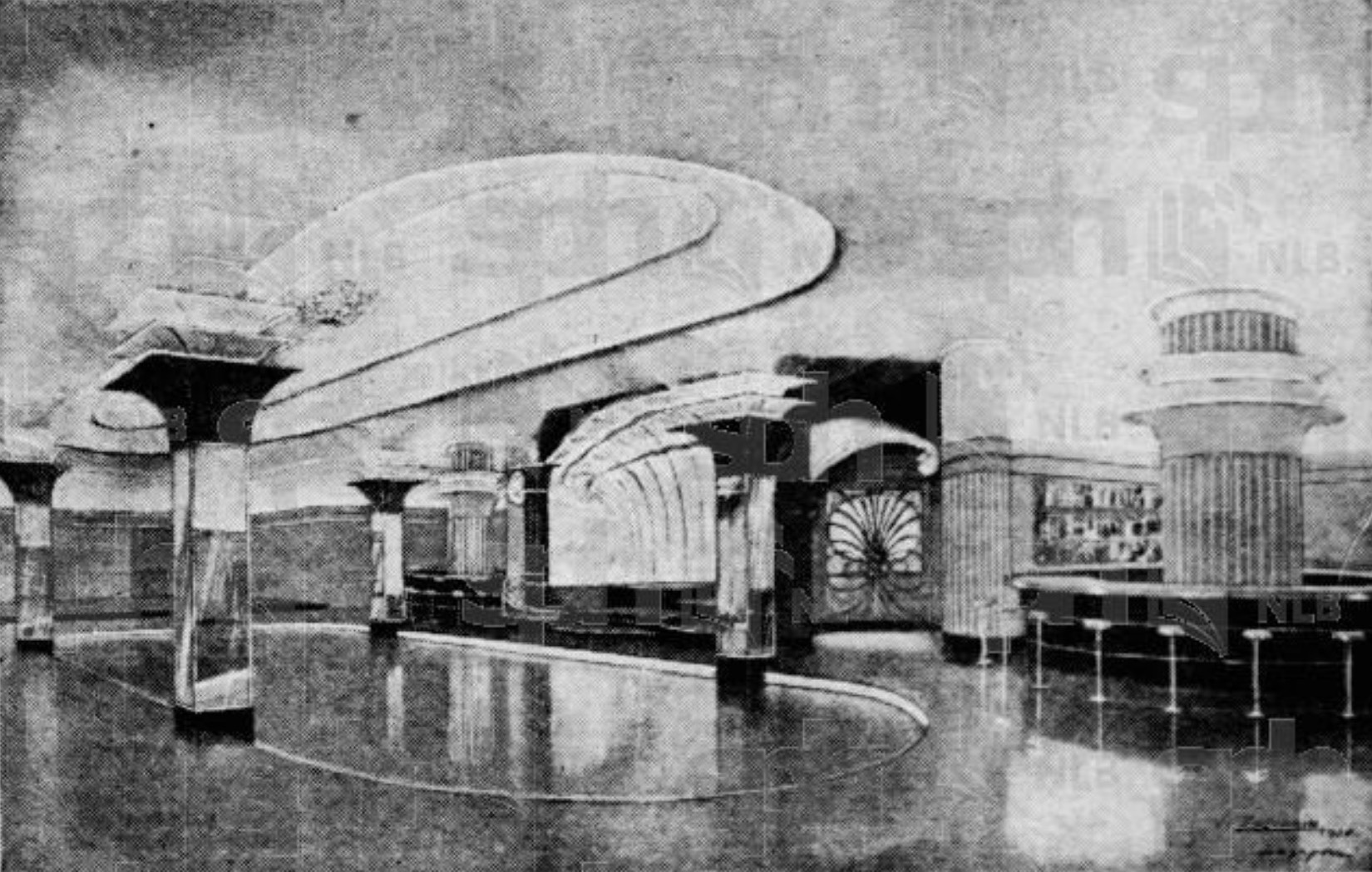Archive
Vasily Zasipkin
- Vasily
- Zasipkin
Василий Андрианович Засыпкин
- 25-12-1886
- Ufa (RU)
- 14-03-1941
- Singapore (SG)
- ArtistDesigner
Vasily Zasipkin was a prolific artist and and influential teacher, much loved in the diaspora. Having lost his studio and all his work in wartime Shanghai, he started over in Singapore.
Word Count: 31

Vladimir Tretchikoff, Portrait of Zasipkin, Projector, 5 May 1934. Vladimir Tretchikoff was a student of Zasipkin. 
Vasily Zasipkin, Study, Ponedelnik (Monday), around 1930. 
Advertisement for V. A. Zasipkin’s Art Studio at 542 Avenue Joffre, Parus, 1937. 
Vasily Zasipkin, interior design for Cathay Café, drawing, Singapore, The Singapore Free Press and Mercantile Advertiser, 8 December 1939. Gorelik, Boris. Incredible Tretchikoff: Life of an artist and adventurer. Tafelberg, 2013.
Khisamutdinov, Amir. Russian literary journals in China. Vladivostok, 2016
Zasipkin, Vasily. “V. A. Zasipkin.” Parus, no. 8–9, Shanghai, 1932.Word Count: 27
Harbin, China (1921–1929); Shanghai, China (1929–1938); Singapore (1938–1941)
Joffre Arcade, 542 Avenue Joffre, French Concession (now Huaihai Lu, Xuhui Qu) (residence and studio) Shanghai
- Shanghai
- Katya Knyazeva. "Vasily Zasipkin." METROMOD Archive, 2021, https://archive.metromod.net/viewer.p/69/2952/object/5138-11320446, last modified: 08-05-2021.
-
Ivan KouninJournalistPublisherShanghai
A self-driven journalist and a self-funded publisher, Ivan Kounin created several illustrated albums focused on the life of Shanghai’s international community, which highlighted the work of Russian artists.
Word Count: 29
Alexander A. YaronDesignerJournalistArtistPhotographerShanghaiAn autodidact and a versatile commercial artist, Alexander Yaron applied his talent in portraiture, photography, interior design, advertising, layout and illustration. His best known projects were illustrated art magazines and books produced as part of Adcraft Studios, in tandem with Ivan Kounin.
Word Count: 42
PonedelnikAssociationShanghaiPonedelink was the most influential and the longest-running art society in Shanghai. Committed to promoting awareness of Russian culture and to developing its members' taste and erudition, it published the finest art magazine of the diaspora.
Word Count: 36
Lyceum TheatreBuildingShanghaiThe new Lyceum Theatre was designed in an eclectic style by British architects Davies & Brooke and opened on 5 February 1931.
Word Count: 20
Mikhail KichiginArtistDesignerTeacherShanghaiMikhail Kichigin was Shanghai’s preeminent émigré artist in the 1930s and 1940s. He travelled extensively around China and Eastern Asia, exhibiting his work and conducting visual studies. A versatile professional and a respected art instructor, he influenced a number of young artists from the Russian diaspora.
Word Count: 47
Victor PodgourskyArtistDesignerTeacherShanghaiVictor Podgoursky spent more than twenty-five years in Shanghai, working as an artist, teacher and designer. As a long-standing member of the Shanghai Art Club, he acted as the resident art critic and an instructor in life drawing and painting for the members.
Word Count: 43